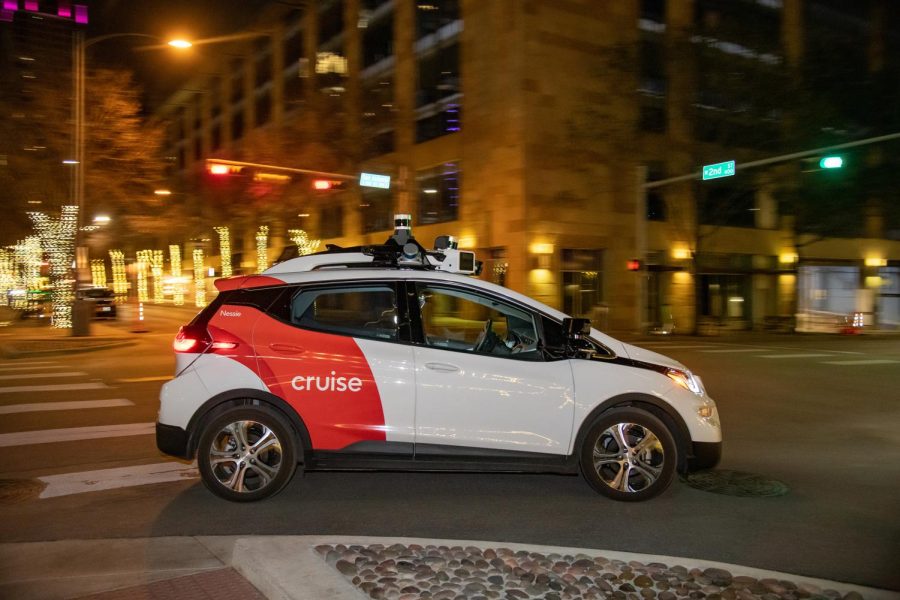New autonomous car company Cruise adapts to bicycle riders, city policy
January 30, 2023
As the autonomous rideshare service Cruise expands its services into Austin, company officials say they are committed to safety amid concerns around the city’s increase in bicycle transportation and accidents.
Cruise’s expansion of services comes at the tail end of the deadliest year of all time on Austin roads. In 2022, 51 pedestrians and cyclists were killed in crashes. An early January video captured a Cruise car veering into an empty bike lane. The Austin Transportation Department’s Bicycle Advisory Council requested Cruise to present to the group on Feb. 21 regarding the video and evidence of other traffic violations by their vehicles.
“Safety is Cruise’s top priority, not just for our passengers but for everyone we share the road with,” a Cruise spokesperson said in an email. “Our technology is always improving and we’re reviewing our lane mapping in that area.”
As of 2021, Austin has completed 50% of the All Ages and Abilities Bicycle Priority Network plan, ATD representative Jeff Stensland said. According to the network’s website, the project aims to provide mobile travelers with “safe and comfortable” choices. Three drafts for updated bicycle lane projects in the AAA network were made available Friday.
Ameer Abu-Ziyadeh, an economics freshman who frequently rides his bike in the downtown area, said he was involved in an accident last year at an intersection on Guadalupe street. A car on his left side attempted to make a right turn as Abu-Ziyadeh continued straight. After the vehicle hit him, the driver apologized then fled the scene. He was not seriously injured, but that is not always the case in automobile accidents, he said.
“You can hit a bike rider and you’ll be completely fine, but it could be very fatal for the bike rider,” Abu-Ziyadeh said.
Cruise’s autonomous rideshare services aim to make traveling by car safer and more efficient, said Megan Prichard, vice president of Ridehail at Cruise.
Originally started in San Francisco in 2013, Cruise expanded its autonomous rideshare vehicles into Austin in December 2022. Cruise vehicles are fully autonomous, relying on sensors and cameras to map its surrounding environment. Prichard said the sensors feed information to artificial intelligence powering the vehicle in order to provide real-time predictions to make its next move. The testing process for driverless rides begins slowly and at times with decreased road traffic to ensure success before expansion.
“I would have to see how (an autonomous vehicle) performs,” Abu-Ziyadeh said. “If it detects people (and) if it knows what it’s doing. I feel like they can be trusted.”
Amit Bhasin, director of UT’s Center for Transportation Research, said it is important for sufficient, reliable data to be collected before expanding services. There will always be a transition period when a new piece of technology is introduced, similar to when automobiles were introduced to a society reliant on horse-drawn carriages, he said.
“As a society, we had to learn and adapt our infrastructure to accommodate this emerging technology,” said Bhasin, a civil, architectural and environmental engineering professor. “The benefits of an automobile or a horse-drawn carriage perhaps would not have been apparent on the very first day. … We’re definitely not going back to horse-drawn carriages, so that’s the next step in evolution.”












